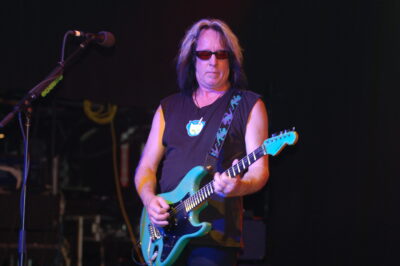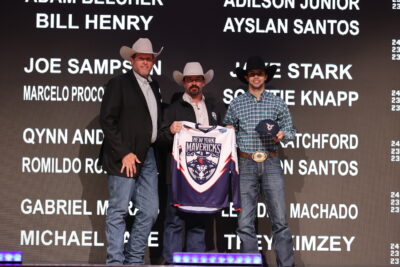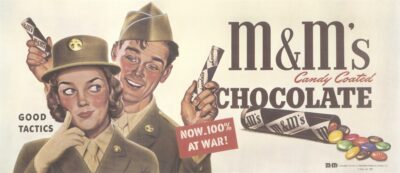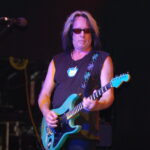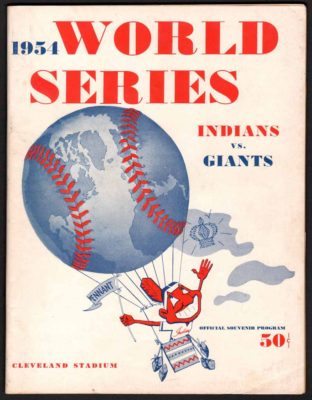
The Perfect Marriage
The history of the World Series and New York City baseball are virtually intertwined. Needless to say, there have been more World Series games played at big league ballparks in the five boroughs than anywhere else in the country. October afternoons at Yankee Stadium were once as common an occurrence as Independence Day, Easter Sunday or Christmas.
But it was with the New York Giants of John J. McGraw that the Fall Classic first found a home in New York. In 1905, 1921 and 1922, McGraw’s Giants won World Series contests, the latter two over the New York Yankees. The Giants owned the town until something unusual happened in 1919. That year, the Boston Red Sox owner, Harry Freeze, lost money on a Broadway production of No, No Nannette. And so Freeze, needing cash, sold his star pitcher, Babe Ruth, to the Yankees. From then on, New York was The Babe’s town and McGraw banished the Yankees as tenants at the Polo Grounds, where the team promptly built a new stadium in The Bronx.
Ruth’s Yankees dominated baseball from 1921 to 1932. The 1927 Yankees, still considered the greats team of all time, swept the Pittsburgh Pirates in that year’s series. In 1932, Ruth capped off his World Series heroics with his famed “called shot” at Chicago’s Wrigley Field.
In 1936, the Yankee dynasty took off again, led by a young Californian, Joe DiMaggio.
Along with a lineup that included Lou Gehrig, Tony Lazzeri, Joe Gordon, Bill Dickey and Charlie Keller, the Bombers, from 1936 to 1939, won four consecutive World Series. In 1937, the Bombers defeated the Giants and that year’s series and four years later, in 1941, the Yanks prevailed over the upstart Brooklyn Dodgers who, under Leo Durocher, surprisingly won the first pennant in that team’s previously comical existence.
The 1941 contest set the stage for New York’s Golden Age of Baseball. From 1947 to 1957, a New York played in every World Series, save the 1948 showdown. From 1949 to 1953, the Yankees, under the leadership of Casey Stengel and led by Mickey Mantle, Yogi Berra, Phil Rizzuto and Whitey Ford, won an unprecedented five straight World Series. The Giants made it to the 1951 classic on the strength of Bobby Thomson’s ninth-inning, pennant-winning home run in a playoff game against those same Dodgers. However, the Yankees had the final say in the World Series.

The 1952 World Series was the Yankees’ most impressive win of that remarkable run. Trailing three games to two and having to play in Ebbets Field, the Bombers prevailed in the final two games on the strength of Mantle’s bat and a shoestring catch by Billy Martin of a Jackie Robinson popup to snuff out a late-inning Dodger rally. There was more glory to come. In 1956, Don Larsen pitched the only perfect game in World Series history, as the Yankees held off the Dodgers in another seven-game classic.
The National League squads had their glory, too. In 1954, the Giants of Leo Durocher and Willie Mays stunned the baseball world with a four-game sweep of the Cleveland Indians, a team that had won 111 games. The unheralded Dusty Rhodes was the Series’ star, winning the first game with a pinch-hit home run. The next year, “the Bums” finally made it, winning their own seven-game matchup with the Yankees, as Johnny Podres blanked the Bombers in game seven, 2-0.
Nothing gold, as the poet once wrote, can stay. And so it was true with the 1950s. By 1957, it was all over the Yankee-Dodger-Giant New York. With suburbia in full swing, few fans were willing to make the night-time subway ride to Upper Manhattan or Flatbush. Larger crowds and more revenue in California beckoned. The Giants moved to San Francisco and the Dodgers to Los Angeles. Still, the mighty Yankees held the fort with the Bombers winning five consecutive pennants from 1960-1964, punctuated by the legendary 1961 team and Roger Maris’s 61 home run season.

By then, New York fans had new darlings. The Metropolitans were hatched in 1962, with the ever-popular Stengel as manager. The Mets also secured the services of George Weiss, the former Yankees general manager, who built the powerhouse squads of the 1950s. Weiss added Tom Seaver, Jerry Koosman, Cleon Jones and Tommy Agee to the Mets’ roster. He hired Gil Hodges as manager and in 1969, the Miracle Mets won the most improbable World Series win in the Fall Classic’s long history.
In 1986, the Davey Johnson Mets won another world title, but for years, Met fans have been left wondering why the team of Gary Carter, Keith Hernandez, Dwight Gooden, Darryl Strawberry and Lenny Dykstra couldn’t have achieved more.
In 1976, the Yankees returned to a refurbished Yankee Stadium to begin another run full of glory, winning five division titles, four pennants and two World Series in the next six years. Those Billy Martin and Bob Lemon squads were paced by Reggie Jackson’s three home runs in the decisive game six of the 1977 World Series and a sterling performance in the field by third baseman Graig Nettles in the 1978 win.
In the mid-1990s, the Yankees of Joe Torre, Paul O’Neill, Derek Jeter and Mariano Rivera, won four World Series in five year, the greatest streak since Stengel’s 1950s Yankees and the Joe McCarthy squads of the late 1930s. The culmination was the 2000 win over the Bobby Valentine-Mike Piazza Mets, itself the first Subway Series since 1956.
The World Series is no stranger to New York. Last year, the Mets won their first pennant in 15 years and their young pitching staff promises more excitement in the years ahead. By the 1970s, World Series games have been played at night. The days when youngsters slipped a wire from a transistor radio up their sleeves and into an ear to listen to games while class was in session is long gone. More important, the Yankee dynasty from 1921 to 1964 has also long passed and since the mid-1960s, the nation itself has seemed lost, hopelessly so, without those autumn afternoons in The Bronx.

